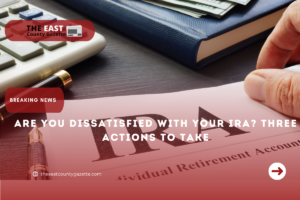Investing in an Individual Retirement Account (IRA) can put you in a position for a very comfortable retirement. While you may be able to rely on Social Security benefits to supplement your income, these benefits will almost certainly not be sufficient to cover all of your expenses.
Your personal savings come into play here, and if you do not have access to a 401(k) plan through your employer, an IRA may be an excellent option for you.

Even if you are eligible to participate in a 401(k), you may decide that an IRA is a better fit for you for a variety of reasons, including lower fees and a greater variety of investment options. However, if you have an IRA and are dissatisfied with the progress you’re making in it, there are a few important steps you should take.
1. Increase your savings rate to a higher level.
If you’re a middle-class earner who has a lot of debt, it may be difficult for you to set aside money for your IRA. However, if you are dissatisfied with your current savings balance, increasing your contributions may be something you should consider doing in the future.
And while you won’t be able to magically increase your income by snapping your fingers, you might want to consider taking on a second job in addition to your primary job and putting the money you earn into your retirement account instead.
Is there another option? Spending should be re-evaluated. It’s possible that there are expenses in your budget that can be reduced, allowing you to put more money into your IRA as a result.
2. Take advantage of the catch-up contribution provisions.
For those 50 and older, you can make a $1,000 catch-up contribution to your IRA, increasing your total annual contribution limit to $7,000, bringing your total allowable contribution to $7,000.
However, if you begin making catch-up payments at the age of 50 and don’t retire until you’re close to 70, you could be looking at a significant increase in your net worth when you factor in investment growth on that $1,000 a year you’re saving.
Read More: 2.3 Million Taxpayers Must File Tax by the End of February to Avoid Penalties
3. Reevaluate your investment strategy
The money in your IRA shouldn’t just sit in a bank account untouched. In fact, one of the most advantageous aspects of IRAs is that they provide you with a plethora of investment options that can help you accumulate significant wealth.
If you’re dissatisfied with the state of your savings, you might think about re-evaluating your approach to investing — and becoming more aggressive in the process.
Despite the fact that stocks tend to carry a higher level of risk than bonds, they also tend to generate significantly higher returns. As a result, if retirement is several years away, it makes sense to invest heavily in stocks in your IRA.
Furthermore, IRAs, as opposed to 401(k)s, allow you to invest in individual stocks. Investing time in researching different companies may lead to the creation of an investment portfolio that outperforms the broader market and leaves you with a sizable savings balance by the time you reach retirement.
Don’t sell your retirement assets too soon.
Consider that you may end up relying heavily on your IRA to see you through retirement, so don’t be content with making only incremental progress. Consider taking these steps if your savings account balance isn’t where you think it should be. By doing so, you can avoid experiencing a financial shortfall during your senior years.
Most retirees are completely unaware of the $17,166 Social Security bonus they are entitled to.
When it comes to retirement savings, if you’re like the majority of Americans, you’re a few years (or more) behind. However, a few little-known “Social Security secrets” may be able to assist you in ensuring a boost in your retirement income.
For example, one simple trick could net you an extra $17,166 per year if you do it consistently enough. We believe that if you learn how to maximize your Social Security benefits, you will be able to retire confidently and with the peace of mind that we all desire.

